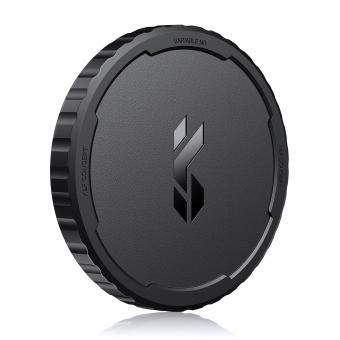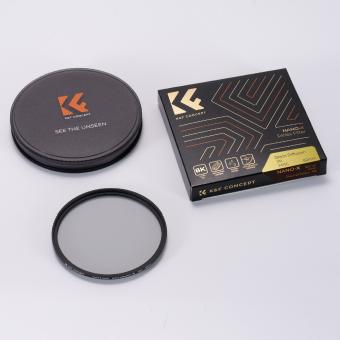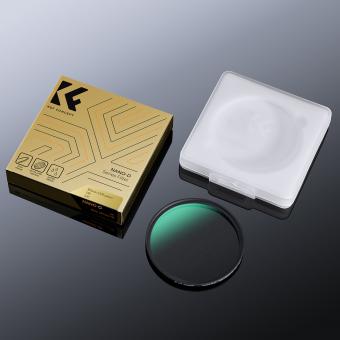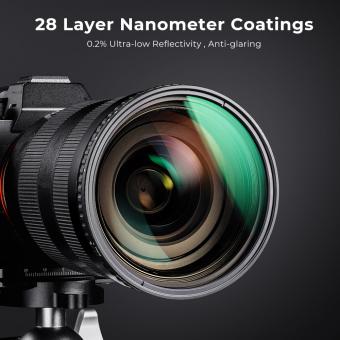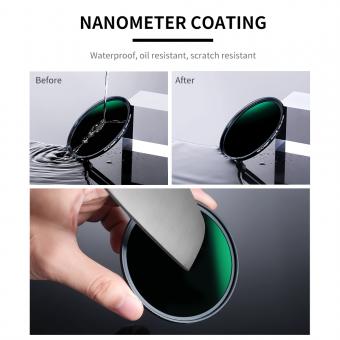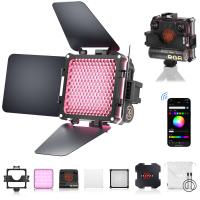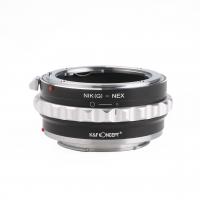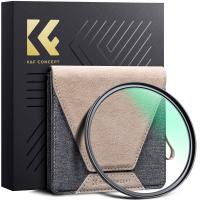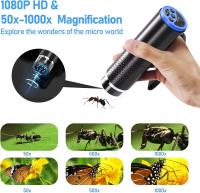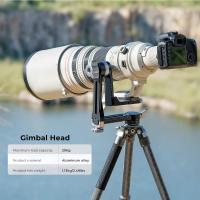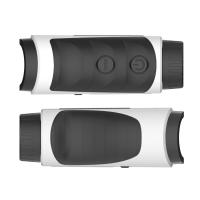Which Nd Filters ?
ND filters, also known as neutral density filters, are optical filters that reduce the amount of light entering the camera lens without affecting the color or hue of the image. They are commonly used in photography and videography to achieve certain creative effects or to control exposure in bright conditions. ND filters come in different strengths, typically measured in stops, which indicate the amount of light they block. Common strengths include ND2, ND4, ND8, and ND16, with higher numbers indicating greater light reduction. Some photographers also use variable ND filters, which allow for adjustable light reduction by rotating the filter. ND filters are particularly useful in situations where a slower shutter speed or wider aperture is desired, such as capturing motion blur in waterfalls or achieving shallow depth of field in bright sunlight.
1、 Types of ND filters: Fixed, variable, graduated, and reverse.
When it comes to choosing the right ND filter for your photography needs, there are several options available. The types of ND filters commonly used are fixed, variable, graduated, and reverse ND filters.
Fixed ND filters are the most basic type and come in various strengths, such as ND2, ND4, ND8, etc. These filters reduce the amount of light entering the lens by a fixed amount, allowing you to control the exposure and create long exposure effects.
Variable ND filters, on the other hand, offer more flexibility as they allow you to adjust the strength of the filter by rotating it. This makes them ideal for situations where the lighting conditions may change quickly, such as shooting outdoors during the day. However, variable ND filters can sometimes introduce color casts or vignetting, so it's important to choose a high-quality one.
Graduated ND filters are designed to balance the exposure between the sky and the foreground in landscape photography. These filters have a gradient that transitions from dark to clear, allowing you to darken the bright sky while maintaining the exposure in the foreground.
Reverse ND filters are a specialized type of graduated filter that is darker in the center and gradually becomes lighter towards the edges. They are particularly useful for capturing sunrises or sunsets, where the brightest part of the scene is near the horizon.
It's worth noting that the latest advancements in technology have led to the development of high-quality ND filters with improved color accuracy and reduced vignetting. Additionally, some filters now come with nano-coatings to repel water, oil, and dust, making them easier to clean and maintain.
Ultimately, the choice of ND filter depends on your specific photography needs and preferences. It's important to consider factors such as the lighting conditions, the desired effect, and the quality of the filter when making your decision.
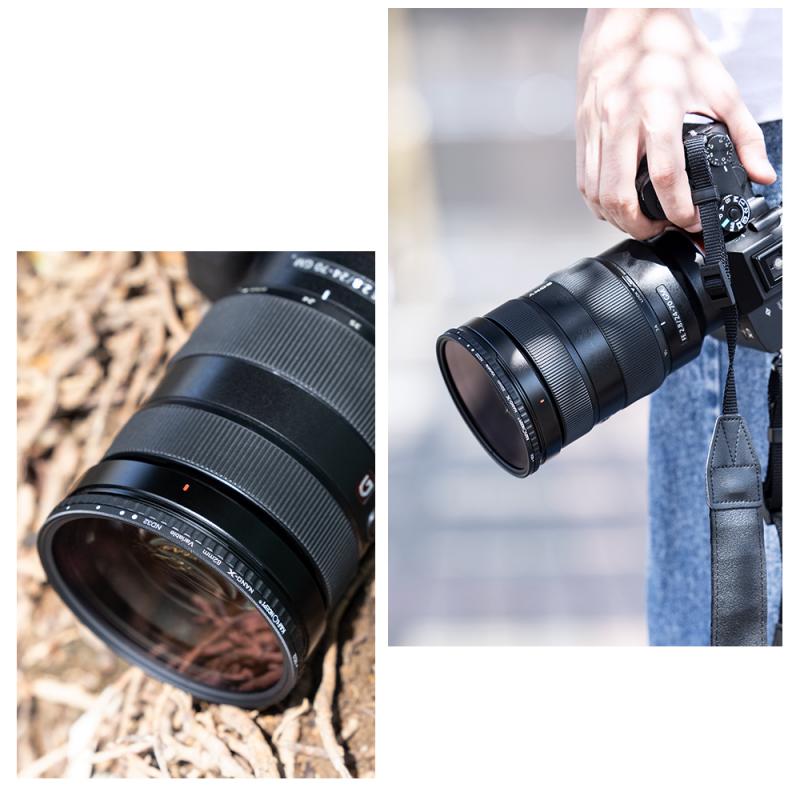
2、 ND filter strengths: Common densities range from 1-10 stops.
When it comes to choosing ND filters, the decision largely depends on the specific requirements of the photographer or videographer. ND filters, or neutral density filters, are used to reduce the amount of light entering the camera lens without affecting the color or quality of the image. They are particularly useful in situations where a slower shutter speed or wider aperture is desired, such as when shooting in bright sunlight or capturing motion blur.
ND filter strengths are measured in stops, with common densities ranging from 1-10 stops. The choice of ND filter strength depends on the amount of light reduction needed for a particular situation. For example, a 1-stop ND filter is suitable for slightly reducing the amount of light, while a 10-stop ND filter is ideal for significantly reducing the light and allowing for long exposure photography.
The latest point of view on ND filters suggests that having a range of filter strengths is beneficial for photographers and videographers. This allows for greater flexibility and adaptability in different lighting conditions. It is recommended to have a selection of ND filters with varying strengths to cater to different shooting scenarios.
Additionally, the quality of the ND filters is also an important consideration. Investing in high-quality filters ensures that there is minimal color cast or loss of image sharpness. It is advisable to choose filters from reputable brands that are known for their optical quality.
In conclusion, the choice of ND filters depends on the specific requirements of the photographer or videographer. Having a range of filter strengths, from 1-10 stops, allows for greater flexibility in different lighting conditions. Investing in high-quality filters ensures optimal image quality.
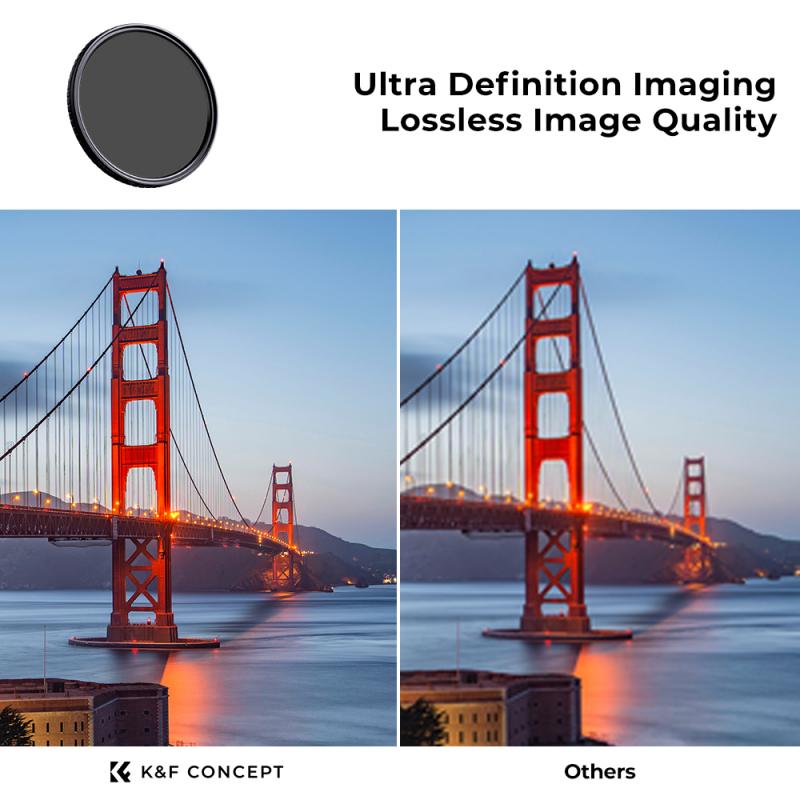
3、 ND filter materials: Glass, resin, and polarizing filters.
When it comes to choosing ND filters, the decision often boils down to the type of filter material: glass, resin, or polarizing filters. Each material has its own advantages and considerations, and the choice ultimately depends on the photographer's specific needs and preferences.
Glass filters are known for their high optical quality and durability. They offer excellent color accuracy and minimal distortion, making them a popular choice among professional photographers. Glass filters are also resistant to scratches and can withstand harsh environmental conditions. However, they tend to be heavier and more expensive compared to other options.
Resin filters, on the other hand, are lighter and more affordable than glass filters. They are made from a synthetic material that is less prone to breakage, making them a good option for photographers who are constantly on the move. However, resin filters may not offer the same level of optical quality as glass filters, and they can be more susceptible to scratches.
Polarizing filters are a specialized type of ND filter that not only reduce light but also eliminate glare and reflections. They are particularly useful for landscape and outdoor photography, as they can enhance color saturation and contrast. Polarizing filters are typically made of glass and offer good optical quality. However, they can be more expensive than regular ND filters and may require careful adjustment to achieve the desired effect.
In recent years, advancements in filter technology have led to the development of new materials and coatings that aim to improve optical performance and reduce weight. Some manufacturers now offer hybrid filters that combine the benefits of glass and resin, providing a balance between optical quality and portability.
Ultimately, the choice of ND filter material depends on the photographer's priorities. If optical quality and durability are paramount, glass filters are the way to go. For those seeking a lighter and more affordable option, resin filters may be the better choice. And for photographers looking to eliminate glare and enhance colors, polarizing filters are a valuable addition to their kit.
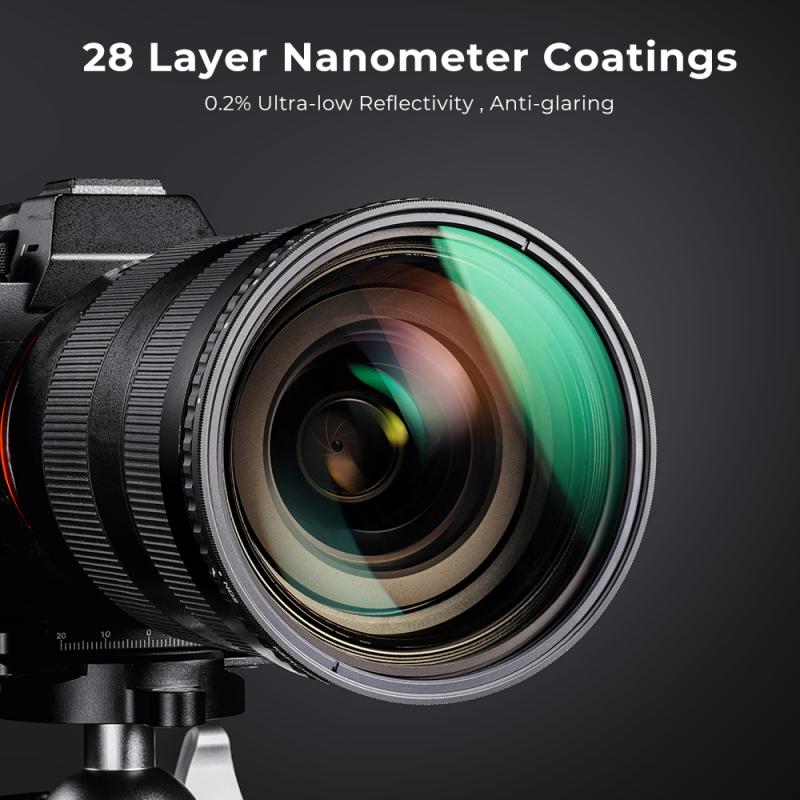
4、 ND filter sizes: Various diameters to fit different lens sizes.
When it comes to choosing the right ND filters, there are various factors to consider. One important aspect is the size of the filter, as it needs to fit your lens properly. ND filter sizes come in various diameters to accommodate different lens sizes. This ensures that you can find the right filter for your specific lens and achieve the desired effect.
The most common ND filter sizes range from 49mm to 82mm, which covers a wide range of lenses commonly used by photographers and videographers. However, it's important to note that not all lenses have the same filter thread size, so it's crucial to check the diameter of your lens before purchasing an ND filter.
In recent years, there has been an increase in the popularity of mirrorless cameras, which often have smaller lens diameters compared to traditional DSLRs. As a result, manufacturers have started producing ND filters in smaller sizes to cater to these cameras. This means that you can now find ND filters in sizes as small as 37mm or even smaller, specifically designed for mirrorless lenses.
Additionally, some ND filters come with step-up or step-down rings, allowing you to use the same filter on lenses with different diameters. This can be a convenient option if you have multiple lenses with varying filter thread sizes.
In conclusion, when choosing ND filters, it's important to consider the size of the filter to ensure compatibility with your lens. With the availability of various diameters, including smaller sizes for mirrorless cameras, you can easily find the right ND filter to enhance your photography or videography experience.





